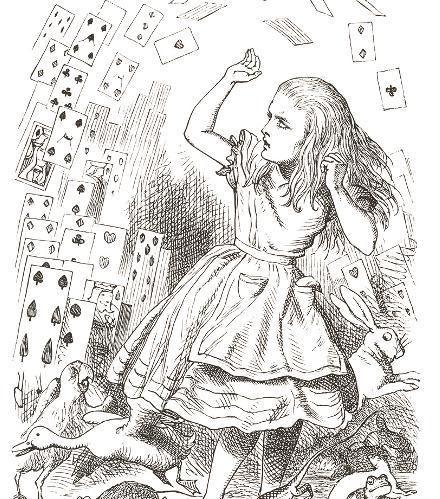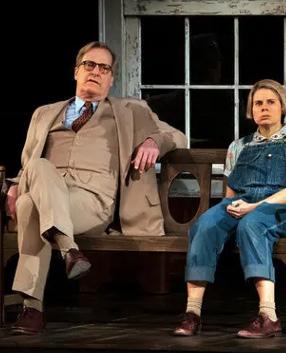
4 minute read
READING AND WRITING CAN BE FUN
ELA CORNER: The Original Alice in Wonderland



Below are the first few paragraphs of Lewis Carroll’s Alice’s Adventures in Wonderland. Give it a read and consider the questions below.
Alice was beginning to get very tired of sitting by her sister on the bank, and of having nothing to do: once or twice she had peeped into the book her sister was reading, but it had no pictures or conversations in it, “and what is the use of a book,” thought Alice, “without pictures or conversations?”
So she was considering in her own mind (as well as she could, for the hot day made her feel very sleepy and stupid) whether the pleasure of making a daisy-chain would be worth the trouble of getting up and picking the daisies, when suddenly a White Rabbit with pink eyes ran close by her.
There was nothing so very remarkable in that; nor did Alice think it so very much out of the way to hear the Rabbit say to itself, “Oh dear! Oh dear! I shall be too late!” (when she thought it over afterwards, it occurred to her that she ought to have wondered at this, but at the time it all seemed quite natural); but when the Rabbit actually took a watch out of its waistcoat-pocket, and looked at it, and then hurried on, Alice started to her feet, for it flashed across her mind that she had never before seen a rabbit with either a waistcoat-pocket, or a watch to take out of it, and burning with curiosity, she ran across the field after it, and was just in time to see it pop down a large rabbit-hole under the hedge.
In another moment down went Alice after it, never once considering how in the world she was to get out again.
The rabbit-hole went straight on like a tunnel for some way, and then dipped suddenly down, so suddenly that Alice had not a moment to think about stopping herself before she found herself falling down what seemed to be a very deep well.
Either the well was very deep, or she fell very slowly, for she had plenty of time as she went down to look about her, and to wonder what was going to happen next. First, she tried to look down and make out what she was coming to, but it was too dark to see anything; then she looked at the sides of the well, and noticed that they were filled with cupboards and book-shelves: here and there she saw maps and pictures hung upon pegs. She took down a jar from one of the shelves as she passed; it was labelled “ORANGE MARMALADE,” but to her great disappointment it was empty: she did not like to drop the jar for fear of killing somebody underneath, so managed to put it into one of the cupboards as she fell past it.

“Well!” thought Alice to herself. “After such a fall as this, I shall think nothing of tumbling down stairs! How brave they’ll all think me at home! Why, I wouldn’t say anything about it, even if I fell off the top of the house!” (Which was very likely true.)
QUESTIONS TO CONSIDER:
1. In your own words, describe what is happening in this passage. (ELA Literature Standard 4: Craft and Structure)
2. What are some key details you noticed when reading? (ELA Literature Standard 1: Key Ideas and Details)
3. Based on these first few paragraphs, what do you already know about Alice, the main character? (ELA Literature Standard 3: Key Ideas and Details)
4. After watching Alice and the New Wonderful, compare and contrast what you saw in the play from what you just read. How was the play similar to or different from the original story? (ELA Literature Standards 7: Integration of Knowledge and Ideas)

WHAT IS ADAPTATION? 3rd-8th grade
WHAT IS ADAPTATION?
An ADAPTATION is the transfer of a work of art from one style, variety, or medium to another. The adapted version might be quite like the original work, or it may simply be inspired by the original work with very few details in common. Adaptation has been a common artistic practice for centuries—for example, many of William Shakespeare’s plays are adaptations of myths, legends, poems, and historical events. Alice and the New Wonderful is one of many adaptations of Alice’s Adventures in Wonderland, written in 1865 by Lewis Carroll.
Common Examples of Adaptation: o The Hunger Games (originally a book) o The Avengers (originally a comic) o Hidden Figures (historical events)
• Film/TV adaptation: A story from a novel, comic book, video game, historical events, or other texts is made into a movie or TV show.
• Stage Adaptation: A story from another type of work, like a book, poem, movie, video game etc, is made into a play or musical o Hamilton (historical events) o To Kill a Mockingbird (originally a book) o Shrek the Musical (originally a movie)
REFLECTION QUESTIONS:
1. What other types of adaptations or examples of adaptation can you think of?
2. When you think about adaptations you’ve seen, how different or similar are they to the source material?
3. Why do we do adaptations? What is fun or interesting about taking something that already exists and changing it up?
YOUR TURN!
1. Think of a story, book, movie, TV show, video game, comic book, or play that you love
2. What form is it in now? (Book, movie, game, etc)
3. What do you like about it?
4. What do you NOT like about it?
5. What would it look like as a book? What about a play? What about a video game?
Write or draw about your adaptation in the space below!





